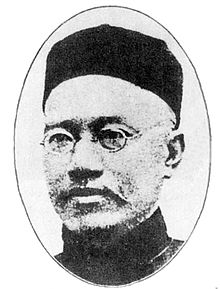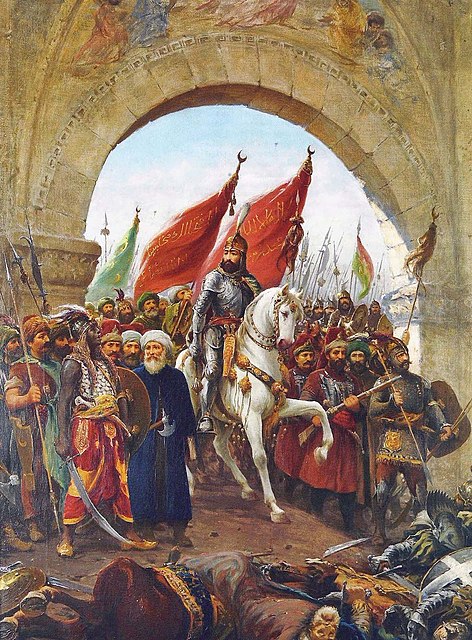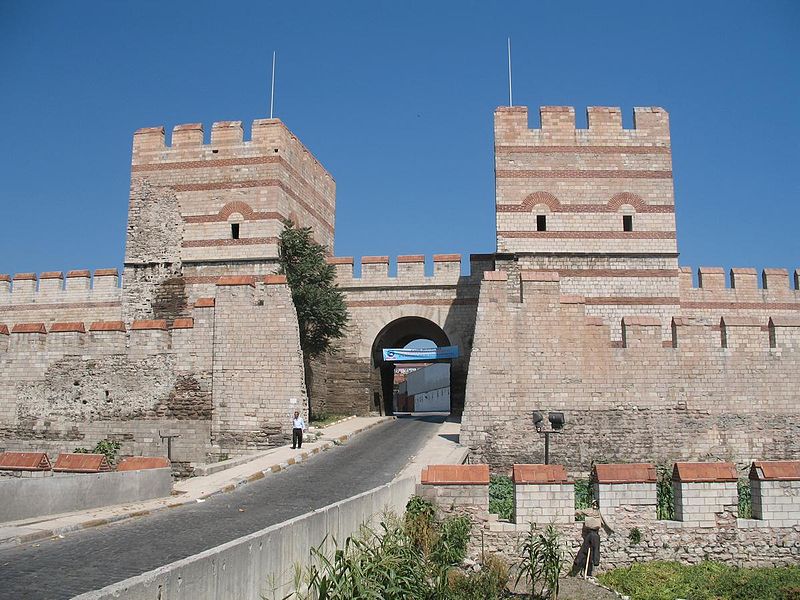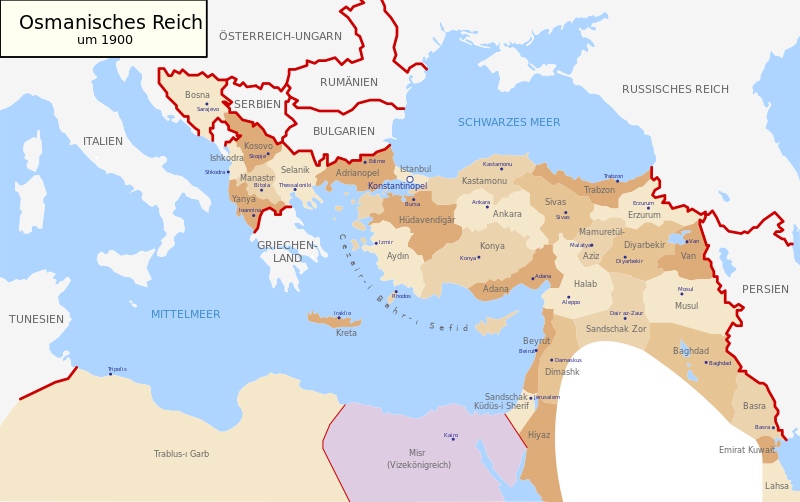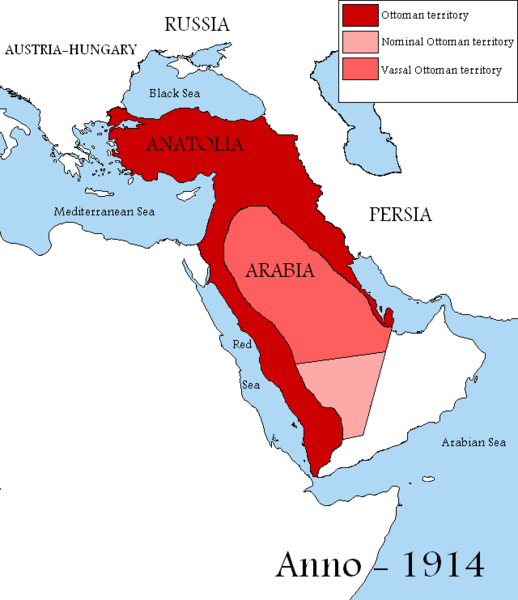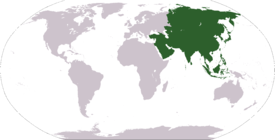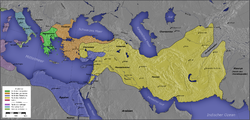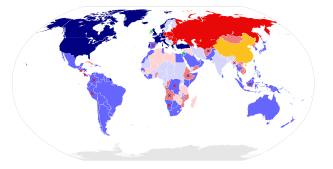A Study of History
http://en.wikipedia.org/wiki/A_Study_of_History
A Study of History is the 12-volume magnum opus of British historian Arnold J. Toynbee, finished in 1961, in which the author traces the development and decay of all of the major world civilizations
in the historical record. Toynbee applies his model to each of these
civilizations, detailing the stages through which they all pass:
genesis, growth, time of troubles, universal state, and disintegration.The major civilizations, as Toynbee sees them, are: Egyptian, Andean, Sinic, Minoan, Sumerian, Mayan, Indic, Hittite, Hellenic, Western, Orthodox Christian (Russia), Far Eastern, Orthodox Christian (main body), Persian, Arabic, Hindu, Mexican, Yucatec, and Babylonic. There are four 'abortive civilizations' (Abortive Far Western Christian, Abortive Far Eastern Christian, Abortive Scandinavian, Abortive Syriac) and five 'arrested civilizations' (Polynesian, Eskimo, Nomadic, Ottoman, Spartan).
Contents
- 1 Titles of the volumes
- 2 Genesis
- 3 Decay
- 4 Universal state
- 5 Predictions
- 6 List of civilizations
- 7 Impact
- 8 Criticism
- 9 See also
- 10 References
- 11 External links
http://en.wikipedia.org/wiki/World_Systems_Theory
World-systems theory
World-systems theory (also known as world-systems analysis)[1] is a multidisciplinary, macro-scale approach to world history and social change.[1][2]World-systems analysis stresses that the world-system (and not nation states) should be the primary (but not exclusive) unit of social analysis.[1][3] World-system refers to the international division of labor, which divides the world into core countries, semi-periphery countries and the periphery countries.[2][3] Core countries focus on higher skill, capital-intensive production, and the rest of the world focuses on low-skill, labor-intensive production and extraction of raw materials.[4] This constantly reinforces the dominance of the core countries.[4] Nonetheless, the system is dynamic, in part as a result of revolutions in transport technology, and individual states can gain or lose the core (semi-periphery, periphery) status over time.[4] For a time, some countries become the world hegemon; throughout last few centuries during which time the world system has extended geographically and intensified economically, this status has passed from the Netherlands, to the United Kingdom and most recently, to the United States.[4]
The most well-known version of the world-systems approach has been developed by Immanuel Wallerstein in 1970s and 1980s.[2][5] Wallerstein traces the rise of the world system from the 15th century, when European feudal economy suffered a crisis and was transformed into a capitalist one.[5] Europe (the West) utilized its advantages and gained control over most of the world economy, presiding over the development and spread of industrialization and capitalist economy, indirectly resulting in unequal development.[3][4][5]
Wallerstein's project is frequently misunderstood as world-systems "theory," a term that he consistently rejects.[6] For Wallerstein, world-systems analysis is above all a mode of analysis that aims to transcend the structures of knowledge inherited from the 19th century. This includes, especially, the divisions within the social sciences, and between the social sciences and history. For Wallerstein, then, world-systems analysis is a “knowledge movement”[7] that seeks to discern the “totality of what has been paraded under the labels of the… human sciences and indeed well beyond."[8] “We must invent new language,” Wallerstein insists, to transcend the illusions of the “three supposedly distinctive arenas” of society/economy/politics.[9] This trinitarian structure of knowledge is grounded in another, even grander, modernist architecture – the alienation of biophysical worlds (including those within bodies) from social ones. “One question, therefore, is whether we will be able to justify something called social science in the twenty-first century as a separate sphere of knowledge.”[10][11]
Significant work by many other scholars has been done since then.[3]
Contents |
Origins
Influences and major thinkers
World-systems theory traces emerged in the 1970s.[1] Its roots can be found in sociology, but it has developed into a highly interdisciplinary field.[3]World-systems theory was aiming to replace modernization theory.[2] Wallerstein criticized modernization theory due to:
- its focus on the state as the only unit of analysis,[2]
- its assumption there is only a single path of evolutionary development for all countries,[2]
- its disregard of transnational structures that constrain local and national development.[2]
- a stress on social conflict,
- a focus on the capital accumulation process and
- competitive class struggles,
- a focus on a relevant totality,
- the transitory nature of social forms, and
- a dialectical sense of motion through conflict and contradiction.[2]
Other influences on the world-systems theory come from scholars such as Karl Polanyi, Nikolai Kondratiev and Joseph Schumpeter (particular, from their research on business cycles and the concepts of three basic modes of economic organization: reciprocal, redistributive, and market modes, which Wallerstein reframed into a discussion of mini-systems, world-empires, and world-economies).[2]
Overall, Wallerstein sees the development of the capitalist world economy as detrimental to a large proportion of the world's population.[5] Similar to Marx, Wallerstein predicts that capitalism will be replaced by a socialist economy.[2]
World-systems thinkers include Samir Amin, Giovanni Arrighi, Andre Gunder Frank, and Immanuel Wallerstein with major contributions by Christopher Chase-Dunn, Beverly Silver, Volker Bornschier, Janet Abu Lughod, Thomas D. Hall, Kunibert Raffer, Theotonio dos Santos, Dale Tomich, Jason W. Moore, and others.[3] In sociology, a primary alternative perspective is world polity theory as formulated by John W. Meyer.
Dependency theory
Main article: Dependency theory
World systems theory builds on but also parts from the proposition of dependency theory. Fernando Henrique Cardoso described the main tenets of the dependency theories as follows:- there is a financial and technological penetration of the periphery and semi-periphery countries by the developed capitalist core countries
- this produces an unbalanced economic structure within the peripheral societies and among them and the centers
- this leads to limitations upon self-sustained growth in the periphery
- this favors the appearance of specific patterns of class relations
- these require modifications in the role of the state to guarantee the functioning of the economy and the political articulation of a society, which contains, within itself, foci of inarticulateness and structural imbalance[12]
In recognizing a tripartite pattern in division of labor, world-systems analysis criticized dependency theory with its bimodal system of only cores and peripheries.
Wallerstein
The most well-known version of the world-systems approach has been developed by Immanuel Wallerstein, who is seen as one of the founders of the intellectual school of world-systems theory.[2][5]Wallerstein notes that world-systems analysis calls for an unidisciplinary historical social science, and contends that the modern disciplines, products of the 19th century, are deeply flawed because they are not separate logics, as is manifest for example in the de facto overlap of analysis among scholars of the disciplines.[1]
Wallerstein offers several definitions of a world-system. He defined it, in 1974, briefly, as:
He also offered a longer definition:a system is defined as a unit with a single division of labor and multiple cultural systems.—[13]
In 1987, Wallerstein's, defines world-system as:…a social system, one that has boundaries, structures, member groups, rules of legitimation, and coherence. Its life is made up of the conflicting forces which hold it together by tension and tear it apart as each group seeks eternally to remold it to its advantage. It has the characteristics of an organism, in that it has a life-span over which its characteristics change in some respects and remain stable in others. One can define its structures as being at different times strong or weak in terms of the internal logic of its functioning.—[14]
Wallerstein characterizes the world system as a set of mechanisms which redistributes resources from the periphery to the core. In his terminology, the core is the developed, industrialized part of the world, and the periphery is the "underdeveloped", typically raw materials-exporting, poor part of the world; the market being the means by which the core exploits the periphery....not the system of the world, but a system that is a world and which can be, most often has been, located in an area less than the entire globe. World-systems analysis argues that the units of social reality within which we operate, whose rules constrain us, are for the most part such world-systems (other than the now extinct, small minisystems that once existed on the earth). World-systems analysis argues that there have been thus far only two varieties of world-systems: world-economies and world empires. A world-empire (examples, the Roman Empire, Han China) are large bureaucratic structures with a single political center and an axial division of labor, but multiple cultures. A world-economy is a large axial division of labor with multiple political centers and multiple cultures. In English, the hyphen is essential to indicate these concepts. "World system" without a hyphen suggests that there has been only one world-system in the history of the world.—[1]
Apart from these, Wallerstein defines four temporal features of the world system. Cyclical rhythms represent the short-term fluctuation of economy, while secular trends mean deeper long run tendencies, such as general economic growth or decline.[1][3] The term contradiction means a general controversy in the system, usually concerning some short term vs. long term trade-offs. For example the problem of underconsumption, wherein the drive-down of wages increases the profit for the capitalists on the short-run, but considering the long run, the decreasing of wages may have a crucially harmful effect by reducing the demand for the product. The last temporal feature is the crisis: a crisis occurs, if a constellation of circumstances brings about the end of the system.
In Wallerstein's view, there have been three kinds of societies across human history: mini-systems or what anthropologists call bands, tribes, and small chiefdoms, and two types of world-systems - one that is politically unified and the other, not (single state world-empires and multi-polity world-economies).[1][3] World-systems are larger, and ethnically diverse. Modern society, called the "modern world-system" is of the latter type, but unique in being the first and only fully capitalist world-economy to have emerged, around 1450 - 1550 and to have geographically expanded across the entire planet, by about 1900. Capitalism is a system based on competition between free producers using free labor with free commodities, 'free' meaning its available for sale and purchase on a market.
Research questions
World-systems theory asks several key questions:- How is the world-system affected by changes in its components (nations, ethnic groups, social classes, etc.)?[3]
- How does the world-system affect its components?[3]
- To what degree, if any, does the core need the periphery to be underdeveloped?[3]
- What causes world-systems to change?[3]
- What system may replace capitalism?[3]
http://en.wikipedia.org/wiki/International_inequality
International inequality
International inequality is inequality between countries (cf. Milanovic 2002). Economic differences between rich and poor countries are considerable. According to the United Nations
Human Development Report 2004, the GDP per capita in countries with
high, medium and low human development (a classification based on the UN Human Development Index) was 24,806, 4,269 and 1,184 PPP$, respectively (PPP$ = purchasing power parity measured in United States dollars).[1]
Contents |
International wealth distribution
A study by the World Institute for Development Economics Research at United Nations University reports that the richest 1% of adults alone owned 40% of global assets in the year 2000, and that the richest 10% of adults accounted for 85% of the world total. The bottom half of the world adult population owned barely 1% of global wealth. Extensive statistics, many indicating the growing world disparity, are included in the available report, press releases, Excel tables and Powerpoint slides.The major component of the world's income inequality (the global Gini coefficient) is comprised by two groups of countries (called the "twin peaks" by Quah [1997]).
- The first group has 13% of the world's population and receives 45% of the world's PPP income. This group includes the United States, Japan, Germany, the United Kingdom, France and Australia, and comprises 500 million people with an annual income level over 11,500 PPP$.
- The second group has 42% of the world's population and receives only 9% of the world PPP income. This group includes India, Indonesia and rural China, and comprises 2,100 million people with an income level under 1,000 PPP$. (See Milanovic 2001, p. 38).
During the 20th century there was considerable divergence between the economic wealth of developed and developing countries. Richer countries like the United States and many European countries converged together towards a GDP per capita much greater than developing countries such as India and Ethiopia.
The evolution of the income gap between poor and rich countries is related to convergence. Convergence can be defined as "the tendency for poorer countries to grow faster than richer ones and, hence, for their levels of income to converge" [2]. Convergence is a matter of current research and debate, but most studies have shown lack of evidence for absolute convergence based on comparisons among countries (with regard to this debate see for instance Cole and Newmayer (2003) or [3]).
According to current research, global income inequality peaked approximately in 1970s when world income was distributed bimodally into "rich" and "poor" countries with little overlap. Since then inequality have been rapidly decreasing, and this trend seems to be accelerating. Income distribution is now unimodal, with most people living in middle-income countries.[2][3]
Further facts
Wealth:- 6% of the world population own 52% of the global assets. The richest 2% of the world population own more than 51% of the global assets, the richest 10% own 85% of the global assets.
- 50% of the world population own less than 1% of the global assets.[4]
- The whole global assets volume is about 125 trillion US$.[5]
- 1,125 Dollar-Billionaires own 4.4 trillion US$. They own 4 times more than the 50% poor people of the world.[6]
- over 80% of the world population lives on less than 10 US$/day.;[7] over 50% of the world population lives on less than 2 US$/day;[8] over 20% of the world population lives on less than 1.25 US$/day [9]
- In 2005, 43% of the world population (3.14 billion people) have an income of less than U.S. $2.5/day. 21.5% of the world population (1.4 billion people) have an income of less than US$1.25/day.[10]
- In 1981, 60.4% of the world population (2.73 billion people) had an income of less than US$ 2.5/day and 42.2% of the world population (1.91 billion people) had an income of less than US$ 1.25 /day. But first of all these improvements were reached in China. In all other developing countries only the percents decreased (by the swelling world population) but the absolute numbers increased.
- In 2008, 17% of the people in the developing countries are on the verge of starvation.[11]
- The proportion of poor people (with less than US$ 3,470 per year) is 78%. The proportion of rich people (with more than US$ 8,000/year) is 11%.[12]
- Social expenditure as a proportion for GDP for Indonesia or the Dominican Republic registers around the 2-3 per cent mark, compared to Sweden or France which at the moment hover just under the 30 per cent mark.
- In contrast to the industrialized states, from 1980 to 1990 many southern states experienced a decline in social spending as a percentage of overall government spending.
http://en.wikipedia.org/wiki/Oecumene
Ecumene
Ecumene (also spelled œcumene or oikoumene) is a term originally used in the Greco-Roman world to refer to the inhabited universe (or at least the known part of it). The term derives from the Greek οἰκουμένη (oikouménē, the feminine present middle participle of the verb οἰκέω, oikéō, "to inhabit"), short for οἰκουμένη γῆ "inhabited world".[1] In modern connotations it refers either to the projection of a united Christian Church or to world civilizations.Contents
- 1 Ancient world
- 2 Byzantine usage
- 3 Modern usage
- 4 Ecumenes in fiction
- 5 References
- 6 External links
http://en.wikipedia.org/wiki/Arnold_J._Toynbee
Arnold J. Toynbee
Arnold Joseph Toynbee CH (14 April 1889 – 22 October 1975) was a British historian whose twelve-volume analysis of the rise and fall of civilizations, A Study of History, 1934–1961, was a synthesis of world history, a metahistory based on universal rhythms of rise, flowering and decline, which examined history from a global perspective. A religious outlook permeates the Study and made it especially popular in the United States,[citation needed] for Toynbee rejected Greek humanism, the Enlightenment belief in humanity's essential goodness, and the "false god" of modern nationalism. Toynbee in the 1918–1950 period was a leading British consultant to the government on international affairs, especially regarding the Middle East.
Contents
- 1 Biography
- 2 Foreign policy
- 3 Study of History
- 4 Civilizations
- 5 Influence
- 6 Reception and criticism
- 7 Family connections
- 8 Allusions in popular culture
- 9 Works
- 10 See also
- 11 References
- 12 Further reading
- 13 Notes
- 14 External links
Study of History
In 1934-1954, Toynbee's ten-volume A Study of History came out in three separate installments. He followed Oswald Spengler in taking a comparative topical approach to independent civilizations. Toynbee's said they displayed striking parallels in their origin, growth, and decay. Toynbee rejected Spengler's biological model of civilizations as organisms with a typical life span of 1,000 years.
Of the 21 civilizations Toynbee identified, sixteen were dead by 1940 and four of the remaining five were under severe pressure from the one named Western Christendom - or simply The West. He explained breakdowns of civilizations as a failure of creative power in the creative minority, which henceforth becomes a merely 'dominant' minority; that is followed by an answering withdrawal of allegiance and mimesis on the part of the majority; finally there is a consequent loss of social unity in the society as a whole.[7]
Toynbee explained decline as due to their moral failure. Many readers, especially in America, rejoiced in his implication (in vols. 1-6) that only a return to some form of Christianity could halt the breakdown of western civilization which began with the Reformation. Volumes 7-10, published in 1954 abandoned the religious message and his popular audience slipped away, while scholars gleefully picked apart his mistakes.[8]
